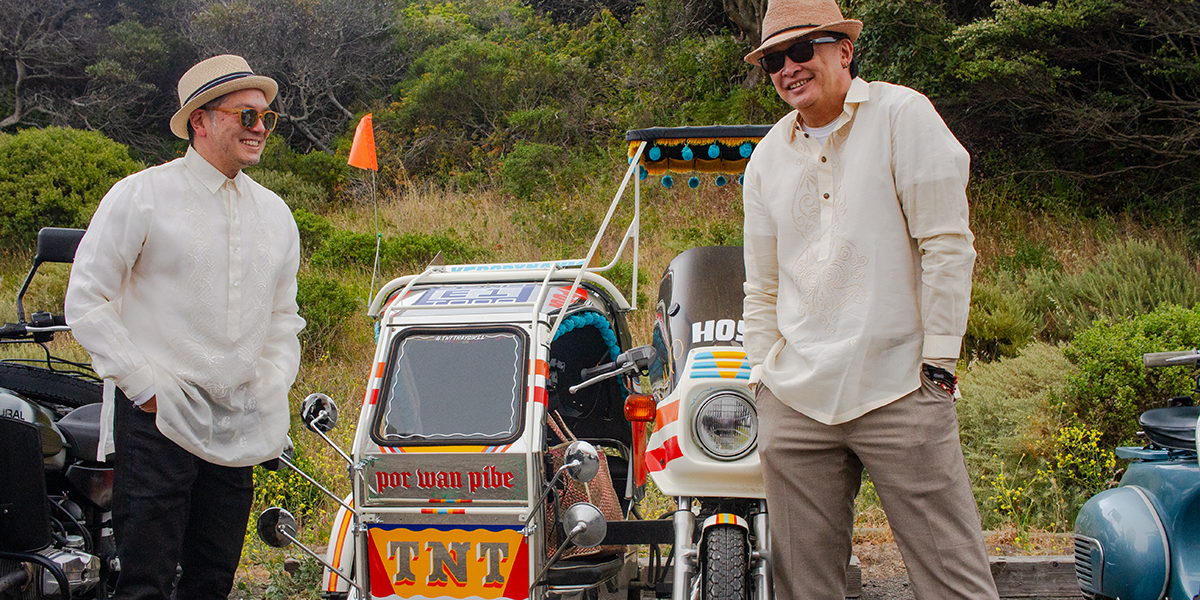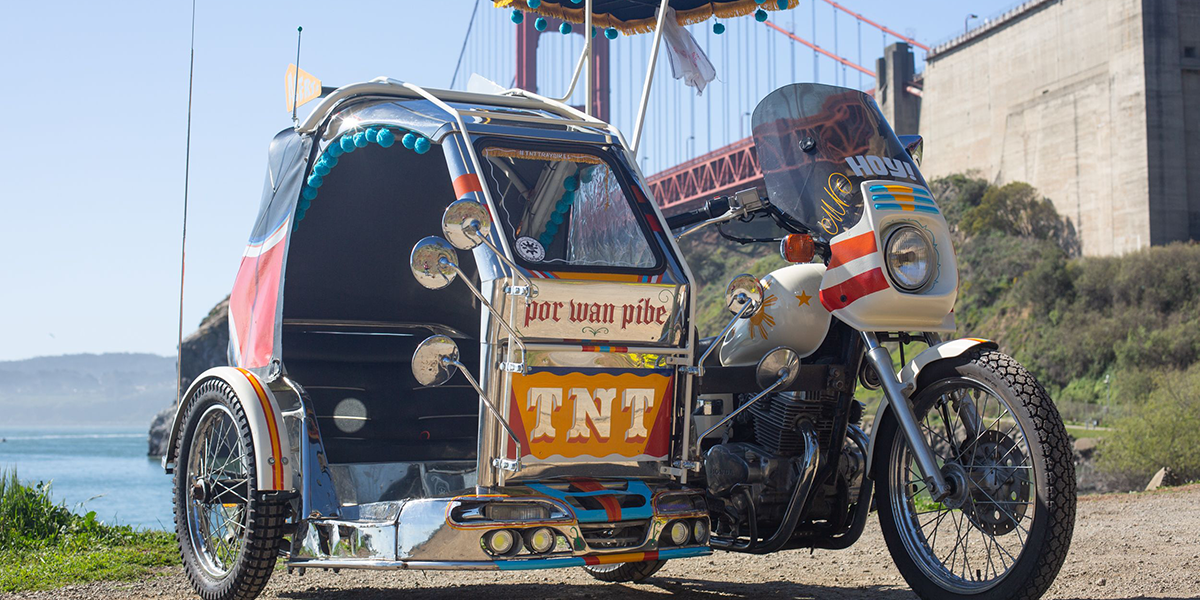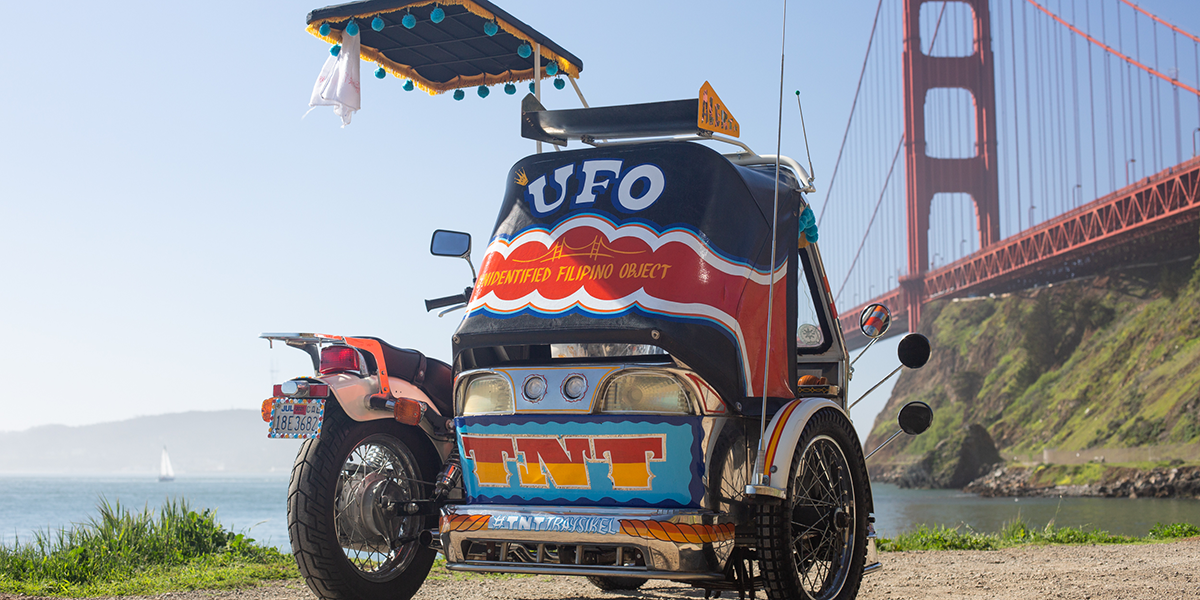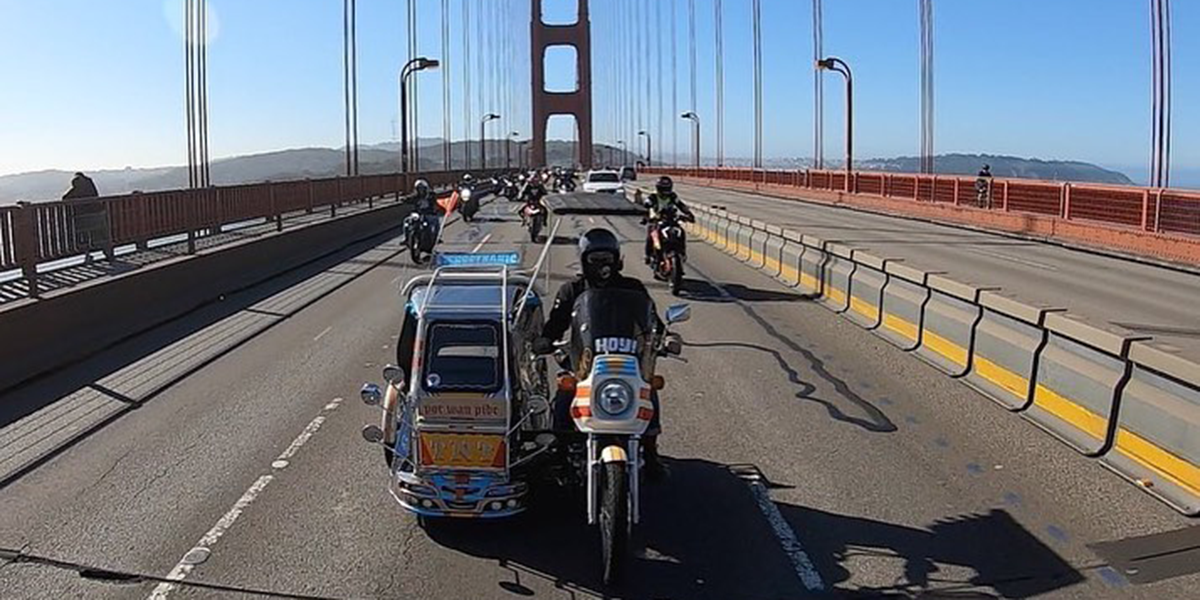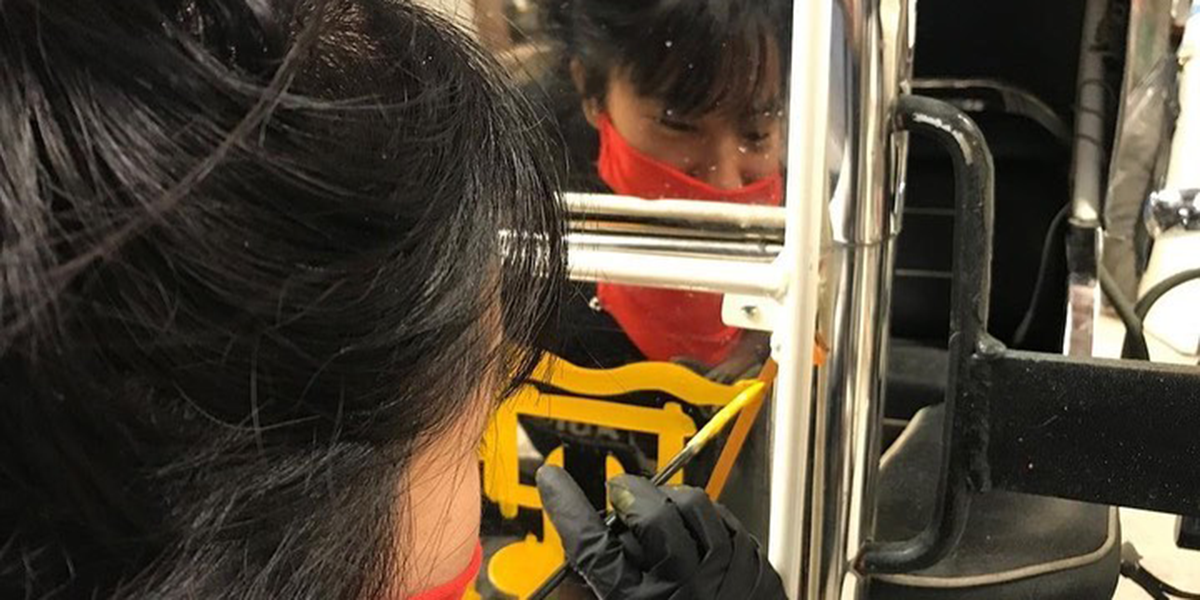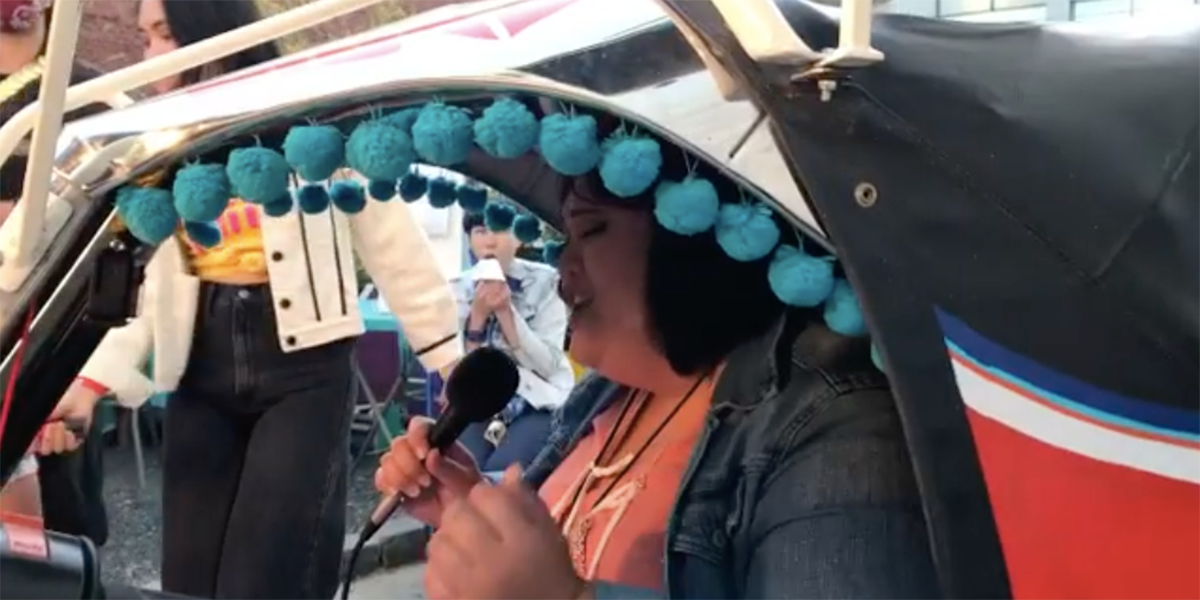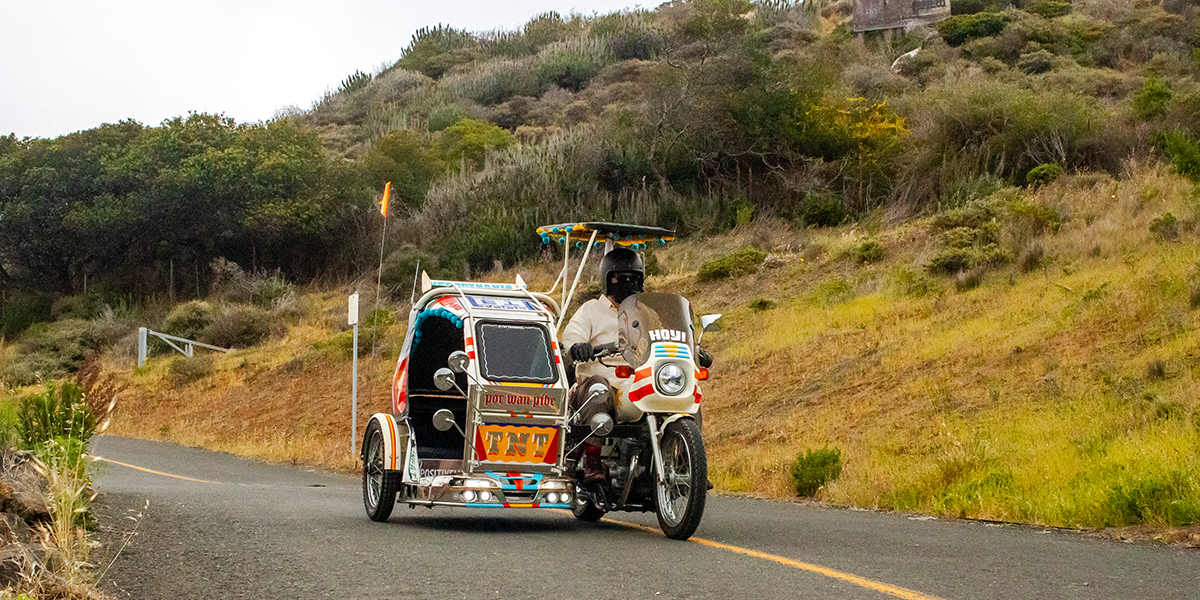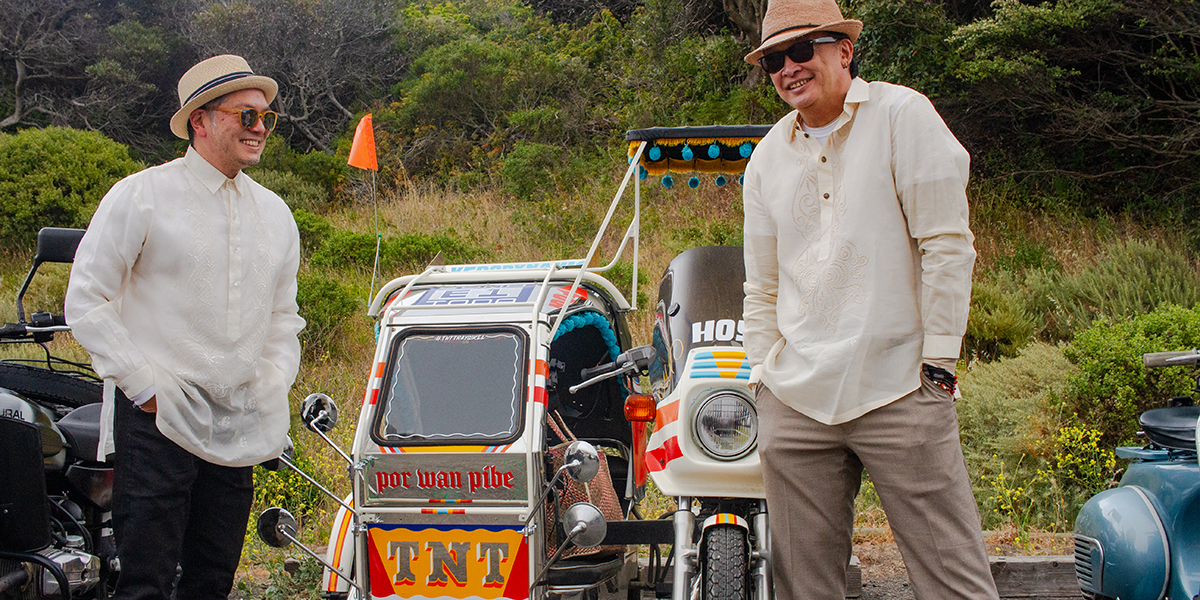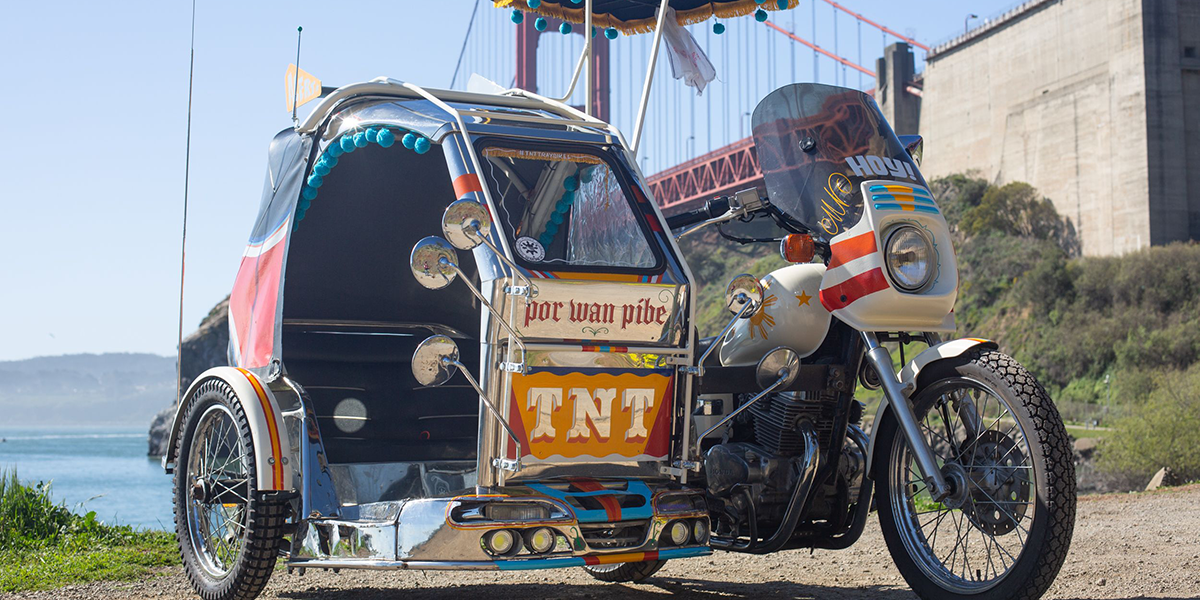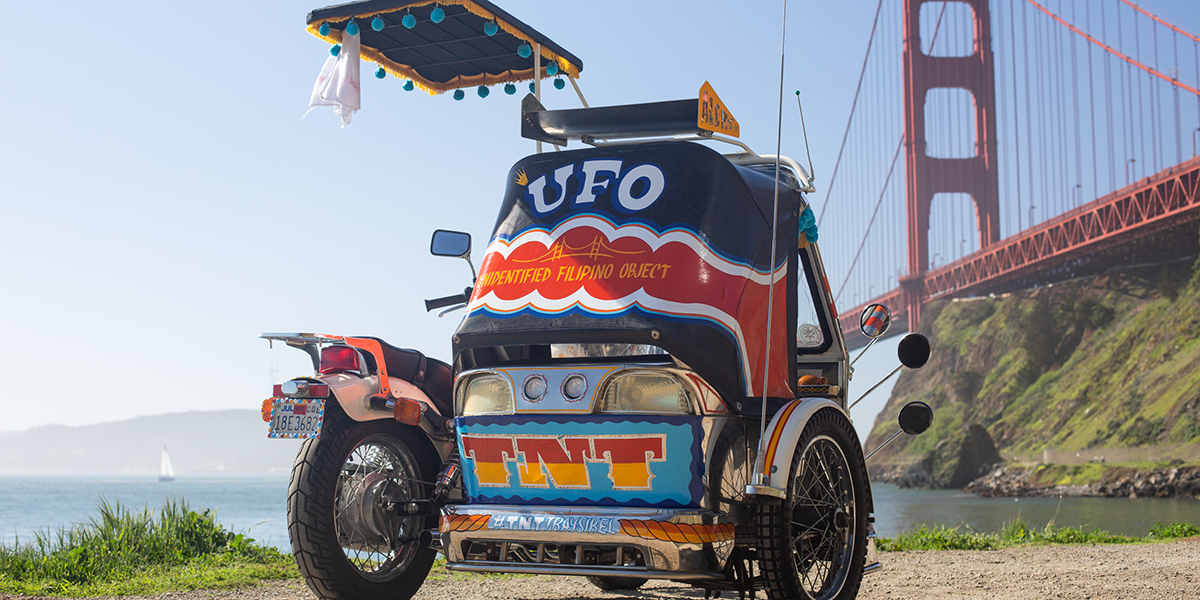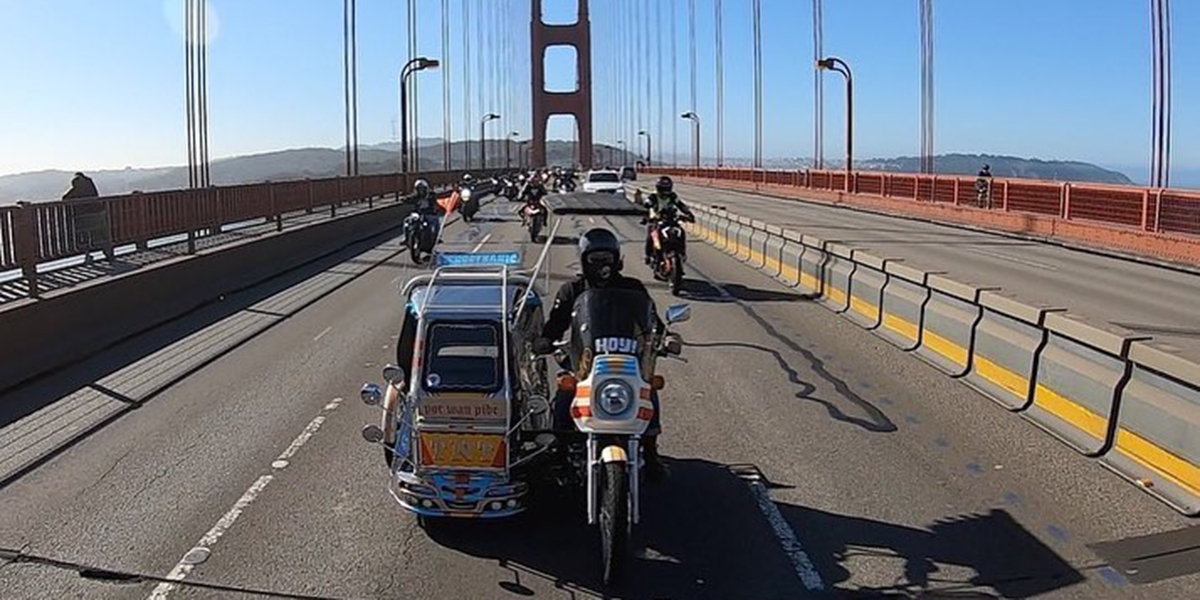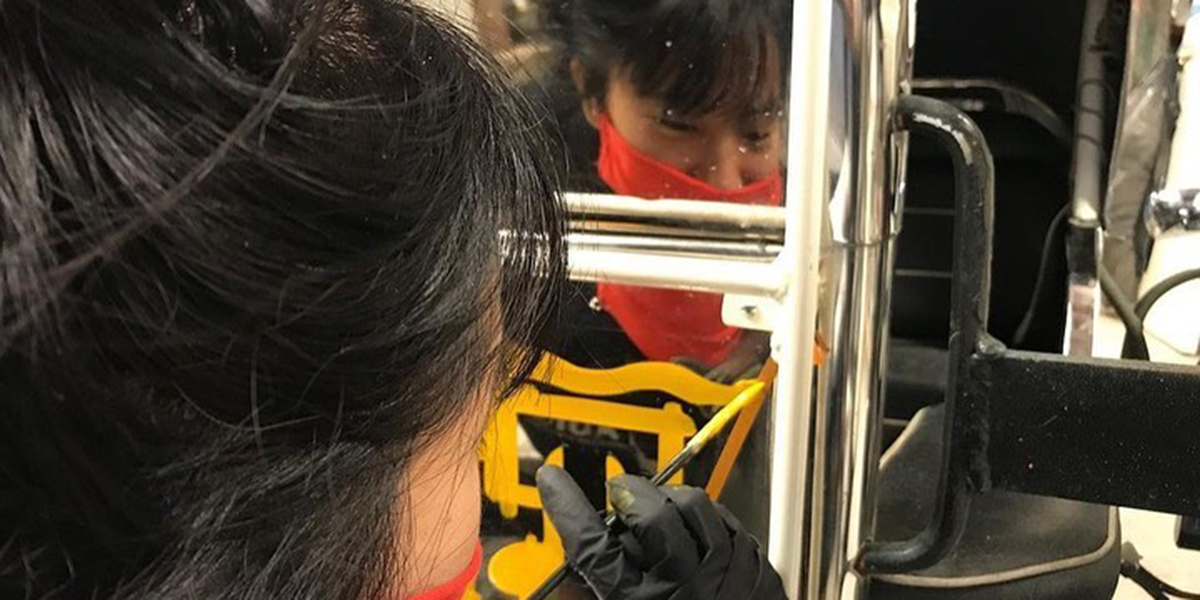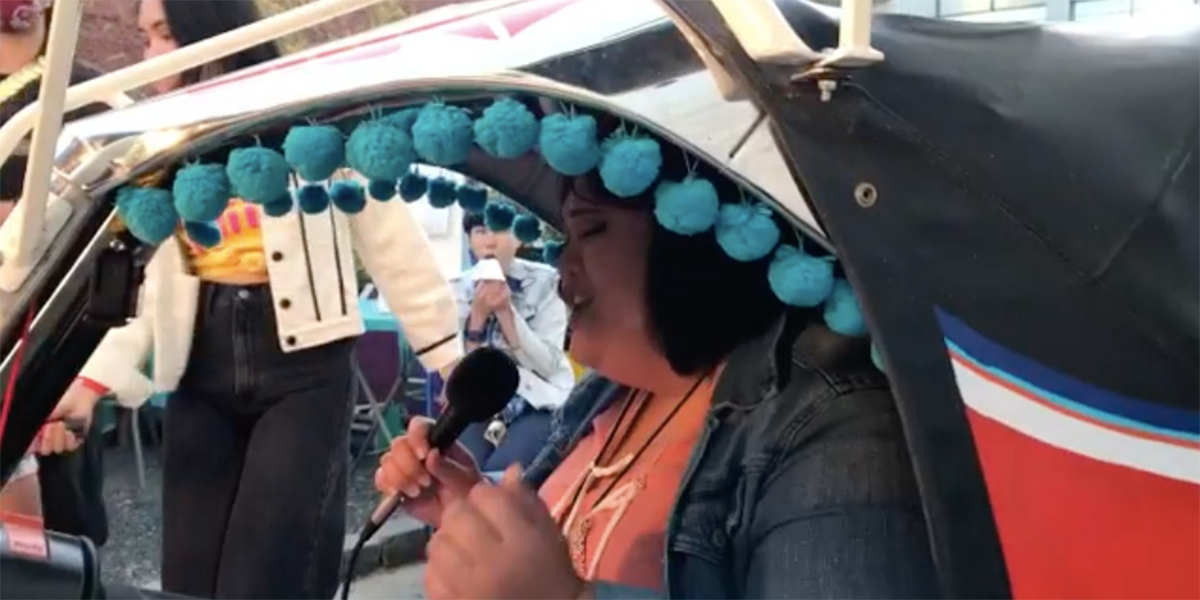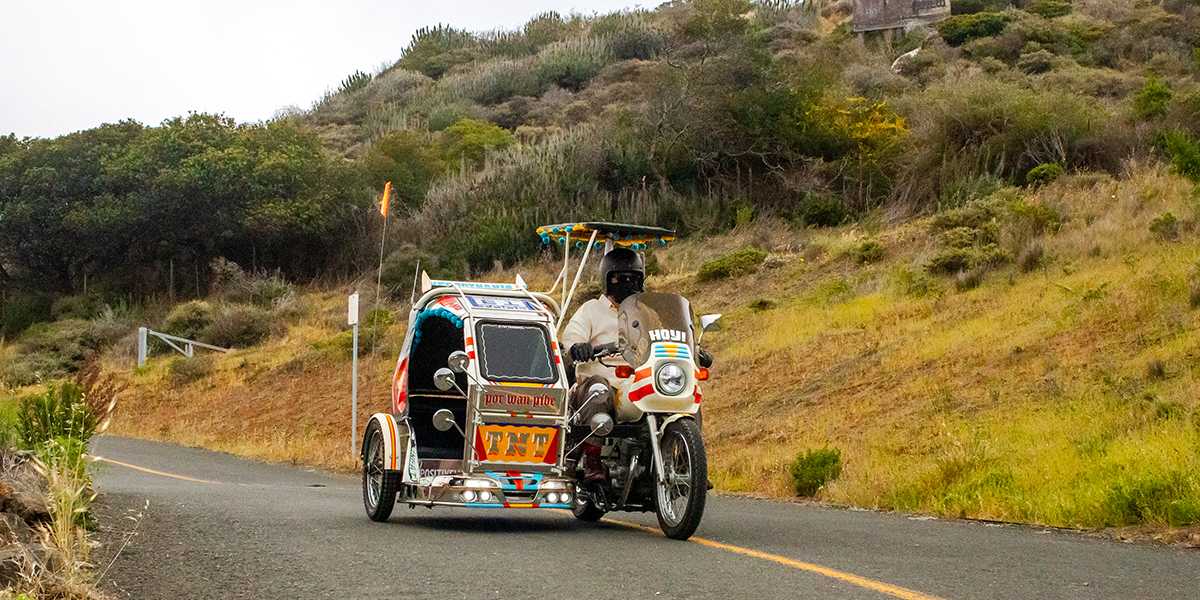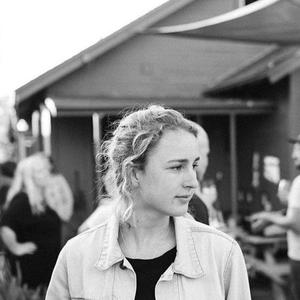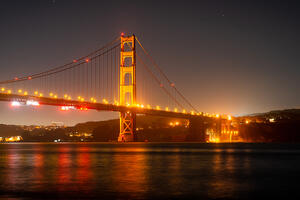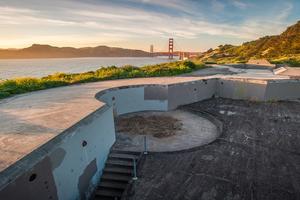TNT Traysikel made history and worldwide news when it crossed the Golden Gate Bridge earlier this year, reportedly becoming the first Filipino traysikel to cross the famed bridge. Like other Filipino traysikels, TNT has a covered sidecar and a canopy over the driver. The bike and sidecar are side by side, unlike Tuk Tuks which are front and back. A few special additions to TNT are a karaoke machine in the sidecar and meaningful graphics and phrases that cover the traysikel.
TNT creators Paolo Asuncion and Mike Arcega built TNT to be a cultural marker for the SOMA Pilipinas Cultural Heritage District in San Francisco. The two met at an art opening in San Francisco’s South of Market (SoMa) neighborhood, where they connected over the discovery that both of their older brothers were best friends in the Philippines. Further ideation between the two led to days spent in garages with artist Meng Nguyen and the Handsome Asians Motorcycle Club, building this custom motorbike and sidecar, fueled by camaraderie and music.
We were able to meet with Paolo and Mike to talk about what TNT represents and about celebrating culture in public lands.
How does TNT Traysikel, as an artwork, fit into the Filipino American diaspora?
Mike: The aesthetic of the traysikel is adjacent to Filipino-customized transport Jeepneys left by Americans after World War II. TNT Traysikel is an immigrant metaphor constructed from a deep colonial history. It’s a work of art, a sculpture, a social object—not just a karaoke machine. It's a way for us to talk about the slippage in what a TNT tricycle can be. That relates to being bicultural and being an immigrant—existing in multiple kinds of cultural spaces and being bilingual. A lot of jokes in the tricycle do that.
What did your crossing of the Golden Gate Bridge in TNT Traysikel represent for you?
Paolo: The traysikel has to code switch, just like immigrants. When the tricycle is sitting in Kapwa Gardens in SoMa, in a Filipino space, then it is a certain thing. But if it's crossing the bridge, then it's another thing—a very Filipino object crossing this very American object that’s very important in immigration history as a gateway to America. It was a powerful moment to cross that bridge for Filipinos. It was fun for us.
Can you tell us about some of the artwork and graphics on TNT?
Paolo: As we added graphics to it, it became more like a museum piece. People approach it, walk around it and notice and point out things. With the younger generation, we have this opportunity to explain [the art] and we can point out what things mean in English, and there's a conversation that takes place now.
Mike: ‘TNT’ is the main graphic on the front. It’s an acronym for ‘Tago nang Tago,’ which means ‘always hiding,’ which is code for an undocumented immigrant. But lately, we've been kind of expanding the possibilities of what TNT means. One meaning that was offered up recently by a historian in SoMa means ‘always going.’
Paolo: On the roof, it says ‘AYOS,’ which means ‘alright!’ and ‘ASTIG,’ which means ‘hard core!’ On the floor, it says ‘INGAT’ which is what Filipinos say to each other as they part ways, they say ‘take care.’ On the more serious side, in the cab under the seat on what looks like a step up, there's a saying that says, ‘POSITIVELY FILIPINOS ALLOWED.’ That's in reference to a sign that was painted on the stairs of a hotel in Stockton in the 1930s that said ‘positively no Filipinos allowed.' So that's a nod to the Filipino American history and a way to take it back, and to say that this is for Filipinos. This is your artwork, your structure, your sculpture. This is a space for Filipinos.
How do public lands play a role in your life and your community?
Mike: Those spaces signify a lot of what San Francisco is to me. I love public spaces, public lands and the public good. It's important that we have those spaces. The thing that’s significant to TNT, is that it's in those spaces, inhabiting them. I'd love for more Filipinos to think about hiking, think about having a picnic on Crissy Field, flying a kite, whatever. I do that with my family so that that means a lot to me.
During your rides, you’ve ridden through sites like Fort Baker, the Golden Gate Bridge, and the Presidio. What does it mean to you when you take TNT through the parks?
Mike: As an object immigrant metaphor, it's doing exactly what immigrants do. They bring things with them, physically, but definitely their memories, their histories, their cultural baggage. So, when TNT moves from SoMa to the Presidio, it's taking [culture] with it.
We kind of personify it when we talk about it. When we take it down Lombard Street, through Crissy Field, or through the Presidio, it's kind of like taking a visitor through those spaces in San Francisco. And many of those beautiful spaces are GGNRA spaces. We hope more Filipinos go visit them.
What’s next for TNT?
Paolo: We're working on a documentary series called TNT SideCareoke. It's really a celebration of the Filipino American experience and presents the history of Filipino immigration to America. We're going to touch on everything Filipino, highlighting accomplishments and contributions to the greater work that is American culture.
Follow @tnttraysikel on Instagram to see where TNT goes next.
